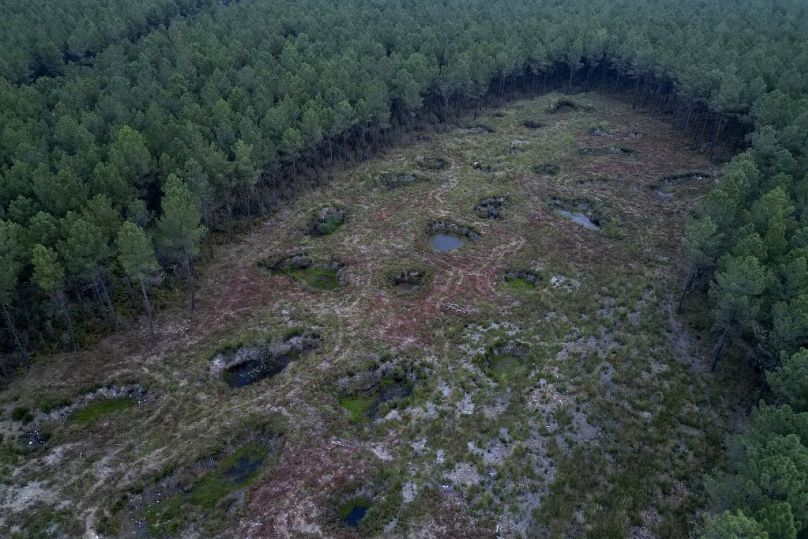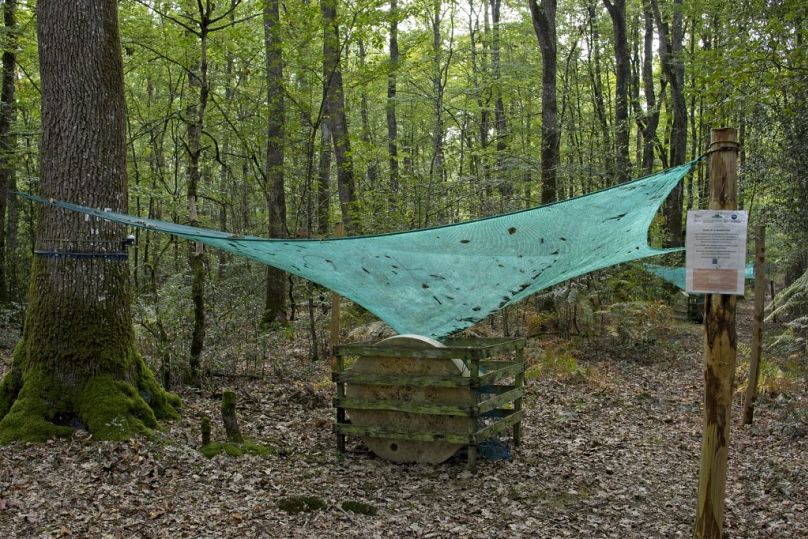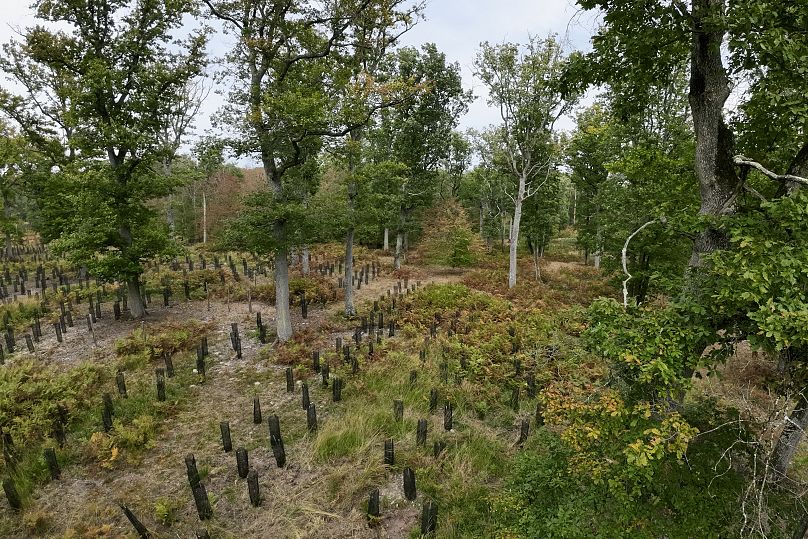A patchwork of 4,200 hectares of forest is being adapted for rising temperatures.
In the Moulière massif in the Vienne département, France's strategy for tackling climate change is called the "mosaic forest".
Here, a conquering birch grows among the oaks, and a young pine replaces its dying cousins.
Summer slips into autumn in the former royal forest northeast of Poitiers. It remains green, but some deciduous trees have lost their branches and Scots pines are scorched. France has seen fewer wildfires than in 2022, but dieback still continues at a low level.
"Climate stress is like a silent storm: it causes just as much damage, but it's less noticeable. The big difference is that this storm doesn't stop," explains Albert Maillet, Director of Forests and Climate Risks at the Office National des Forêts (ONF).
As manager of France's public forests - 17 million hectares in mainland France - the ONF is looking for solutions with "a +4°C scenario by 2100" in mind. France has warmed by around 1.8°C since the beginning of the 20th century.
Adapting to climate change is an immense challenge
"We're trying to make the forest absorb a 10,000-year thermal shock in 10 years", says Albert Maillet. The solution lies in diversifying species, he says, even introducing "southern" or "foreign" species further north.
France is "the only country in Europe at the confluence of four bioclimatic zones: Atlantic, continental, mountain (Alpine) and Mediterranean. And perhaps soon dry tropical in part of the southern zone", stresses Albert Maillet.
In the Moulière state forest, all the adaptation scenarios are already in place. Antoine Bled, Director of the ONF's Poitou-Charentes branch, unfurls a forest management map.
Small, irregular squares make up the design of the massif: blue for natural regeneration (without planting) and beige for ageing islands (trees providing shelter for birds and insects).
The different types of management range from salmon to burgundy colours for softwoods, and from soft green to khaki for hardwoods. Mixed plots come in blond and orange; moorland is circled in blue, and reserves are hatched in brown.
This patchwork of 4,200 hectares forms the "mosaic forest".
How will the mosaic help forests to cope with climate change?
The map’s pattern "illustrates the ONF's strategy in the face of climate change", explains general manager Valérie Metrich-Hecquet.
At plot 242, hundred-year-old oaks thrive in a regular forest with beech and hornbeam growing underneath. The aim here is to protect France's heritage: remarkable woods destined for cooperage - the art of making barrels, vats, buckets and tubs.
Forester Christophe Chopin is in charge of the "Renecofor" research programme which was set up 25 years ago to assess the reaction of forest ecosystems to climate change.
"We evaluate the level of tree growth, the date of leaf appearance and fall, and acorn production," he says.
The ONF harvests acorns from this "remarkable" area, known for the quality of its trees, to ensure the long-term survival of the "exceptional genetics" of the sessile oak. It has now adapted to the local climate and "could be planted further north" in the future.
A few kilometres away, on plot 237, the oak is still king. But this time in irregular high forest, accompanied by maritime pines, ash and hazel trees. Chestnut trees, overcome by a canker disease, have withered away, while birch has made an entrance.
"Where we have more mixed plots, the soil and ecosystems function better,” Antoine Bled notes.
“You lose 30 to 40 per cent of productivity if the soil doesn't function properly in terms of water."
Introducing new trees to areas that are suffering
The next stage is "migration aid" where trees from elsewhere are planted to adapt to the changing conditions. On plot 85, Scots pine and sessile oak are in trouble. The deciduous trees capture most of the soil's water reserves.
On 7 hectares, the ONF is giving a boost to natural regeneration by introducing more southerly oaks and Laricio pines, which it hopes will be better adapted. The seedlings grow in the shade of hundred-year-old oaks, surrounded by a fine wire mesh that protects them from the teeth of wild animals.
Elsewhere, Turkish pines and a Spanish fir are being tested in small areas, “so that we can go back to the way things were," explains Albert Maillet.
Whatever humans do to intervene, he insists, "new afforestation will grow more slowly".
"Harvesting wood in a mosaic forest is more complicated than in a regular forest, but it's less complicated than in a dying forest.”





















